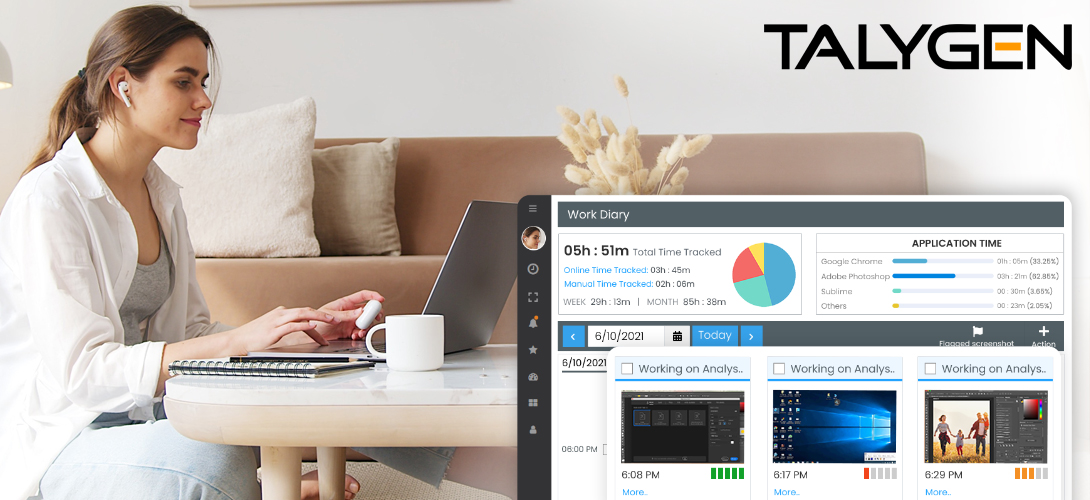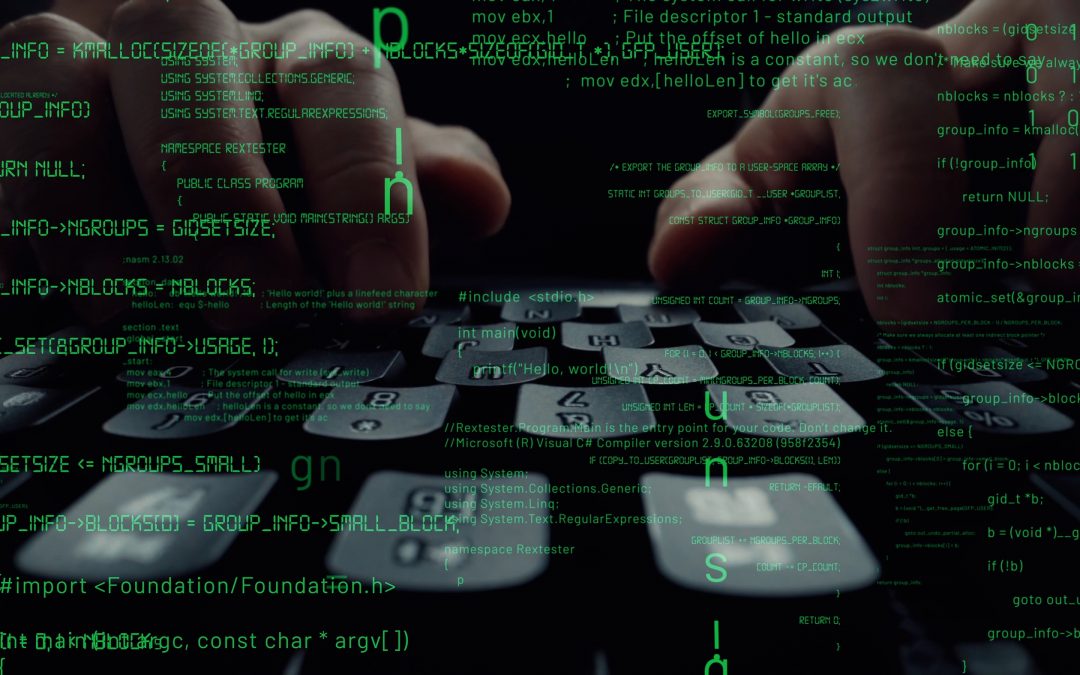Software used to monitor and track the actions of employees is known as employee monitoring software. Employers can gather data on various aspects of employees' behavior, such as internet usage, application usage, keystrokes, and even screenshots. Software for employee monitoring is mostly used to increase productivity, check the compliance with company policies, safeguard sensitive data as well as address security concerns. When selecting an employee monitoring software, there are a variety of aspects to take into consideration. Remember these essential factors: Features- Determine what features you'll need based on the requirements of your business. Some of the most commonly used features include activity monitoring and website blocking. Other features include keystroke logs as well as tracking software including email monitoring, and report generation. Prioritize only the features which are relevant to your monitoring needs.
Privacy and Compliance- Ensure that the software complies with ethical and legal guidelines for employee monitoring. Know the relevant laws and regulations in your area. Look for software that is transparent and configurable features to respect the privacy rights of employees.
User-Friendliness: Consider the software's ease of use and accessibility. A user-friendly interface as well as a simple installation process will cut down on time and make the process easier to implement. Look for dashboards that are customizable and reporting tools that permit users to quickly analyze the data you have taken.
Integration and Compatibility - Make sure that the software you choose to use is compatible with the IT infrastructure and the systems you are using, such as email clients and collaboration platforms, as well as project management tools and operating systems. Compatibility is crucial to ensure continuous monitoring without affecting your daily routine.
Data Security - Review the security measures taken by the program to safeguard the information collected. Data encryption, secure storage access controls, as well as the use of industry-standard security protocols are crucial. Verify that the software company offers strong data protection and security procedures.
Scalability - Consider the capacity of the software to expand in line with your business. Select software that can easily be scaled to accommodate your evolving needs in the event of expanding your staff or adding new offices.
Reporting and Analytical Capabilities- Review the reporting and analytical capabilities of the program. Take into consideration features that will give you a comprehensive view of employee performance, patterns and time allocation. Analytics and reports that can be customized to aid you in making better choices and identify potential areas of improvement.
Customer Support - Assess the quality of the customer service provided by the vendor. You can assess their speed of response, accessibility and technical assistance that they offer. If problems arise, a good customer service ensures that you receive prompt assistance.
Cost- Consider the pricing model for the software, whether it's a one-time purchase or subscription-based. Know the pricing structure and any additional costs for support updates and additional features. Try to balance the price of your product in relation to its features and value.
Employee Communication and Transparency- Establish an open and transparent communications with your employees regarding the use of monitoring software. The purpose and scope of the monitoring in a clear manner. Discuss any concerns they might have and ensure they understand how they can be assured of their privacy.
When you look at these aspects you can make an informed choice that meets your company's specific needs and respects employee privacy, while meeting all legal obligations. Check out the top time tracking monitoring services for more recommendations.

What Are The Benefits Of Software For Employee Monitoring?
Software for monitoring employees includes a wide range of features designed to track and analyze the activities of employees. Employee monitoring software may have different options. Here are a few typical ones. Activity Monitoring This feature records and tracks all employee actions including websites visited, programs that are used, the files downloaded and the time spent. It provides a comprehensive review of how employees use their time working.
Keystroke Logging Keystroke Logging Keystroke recording records each keystroke employees type. It is a great tool to determine productivity bottlenecks as well as identify illegal actions.
Screenshots, screen recordings and screen shotsScreenshots and screen recordings are captured by some applications of a computer screen at specified intervals. Other applications record their screen in real-time. This feature can help monitor productivity, ensure compliance or troubleshoot problems.
Internet Usage Tracking This feature permits employees to track their online activities including the websites they visit, searches and downloads. It helps identify inappropriate browsing or security risks.
Application Usage Tracking - This function is used to track which apps employees utilize during work hours. It provides insights into the applications that are often used, and can help detect any excessive or inappropriate use of the application.
Email Monitoring – This allows employers monitor employee emails to monitor received and sent messages as well email content. It helps ensure compliance with company policy, prevents leaks of data, investigates any suspicious activity and helps to ensure compliance.
Document and file tracking This feature monitors the changes to files, transfers, and changes to files. It assists in protecting sensitive data by monitoring document collaboration and ensuring compliance with data protection guidelines.
Remote Monitoring- Remote monitoring capabilities enable employers to track employees who work remotely or are in different locations. Employers can track their activities and ensure the efficiency of employees regardless of their physical location.
Productivity Analysis Software for monitoring employees typically includes productivity analysis tools, which provide insights into employee productivity as well as work patterns and time allocation. These analyses assist in identifying areas of improvement and help optimize workflow.
Analytics and Reporting - Rich analytics and reporting tools produce precise reports that include visualizations of data collected. These reports offer valuable insight regarding employee performance as well as the resource allocation.
Compliance and Policy Management- Some software solutions provide features that ensure compliance with regulations of the industry and company guidelines. They enable employers to define guidelines for acceptable usage of computers as well as internet connection.
Alerts and Notifications- Alerts and notifications alert employers or managers when specific actions or events take place. They could, for instance notifying managers or employers when certain events or activities occur.
The features and capabilities of the features can vary between various products for employee surveillance. When choosing software, consider the features that align with your objectives for monitoring and conform with legal and ethical guidelines in your region. Take a look at the recommended time tracking monitoring software for site advice.

What Is The Privacy And Compliance Law Regarding Employee Monitoring Software?
Compliance with privacy and compliance laws is an important component of software for monitoring employees. While the legal requirements may differ based on the location however, there are some common ways employee monitoring software adheres compliance and privacy law. Consent and NotificationMany areas require employees to provide an informed consent and be informed prior to any surveillance activity. Employee monitoring tools usually include options that permit employers to communicate with their employees in a clear manner. This might include providing written notifications, getting consent using consent forms, or establishing an employee guide that outlines the monitoring practices.
Transparent Monitoring Policy - Employee monitoring software promotes transparency by making sure that employees know the types of data collected as well as their intended use and the extent of monitoring conducted. Employees can better understand their privacy rights and the limits of monitoring when the policies are clearly and thorough.
Data minimization is often employed by employee monitoring software to ensure compliance with privacy laws. This means that only necessary data will be kept and stored. Irrelevant or excessive data are avoided. By restricting the collection of data to only what is essential for monitoring purposes, the software reduces the risk of privacy and increases compliance.
Anonymization and Aggregation Some employee monitor software anonymizes / collects data to ensure the security of privacy for employees. Anonymization eliminates personally identifiable data (PII) from collected data which makes it impossible to link data with specific people. Data from several employees is combined to give insight into the group without identifying any individual.
Secure Data Storage and encryption- Employee monitoring software prioritizes the security of data collected. To guard against insecure access, breaches, or accidental disclosure, the software utilizes encryption and secure data storage methods. This includes the security of data while in transit and at home.
Access Controls and Restricted Permissions For compliance purposes, employee monitoring software often gives granular access controls and permissions. Employers can limit the access to the monitoring data only to the individuals who require it to have legitimate reasons like HR employees and the designated administrator.
Rights and Remedies for Employees Rights and remedies - Respecting the rights of employees is an important aspect of adhering to privacy and compliance regulations. Software for monitoring employees usually has tools that allow employees to access and correct their own monitoring data and make complaints. It allows employees the right to seek recourse in the event of a privacy violation, and also make use of their rights.
Conformity to Data Protection Regulations - Employee monitoring software is created to be in compliance to data protection laws such as the General Data Protection Regulation in the European Union (GDPR) or the California Consumer Privacy Act in the United States (CCPA). Compliance means implementing data protection measures and respecting the rights of data subjects and ensuring that data processing is legal.
It's important to note that while software for monitoring employees can aid in compliance, companies should also seek legal advice and be aware of pertinent laws and regulations that are in their area of responsibility. Complying with compliance and privacy laws requires an integrated strategy that goes beyond the software. This includes explicit policies, training for employees, and continuous compliance monitoring. Read the top time tracking monitoring services for blog recommendations.
